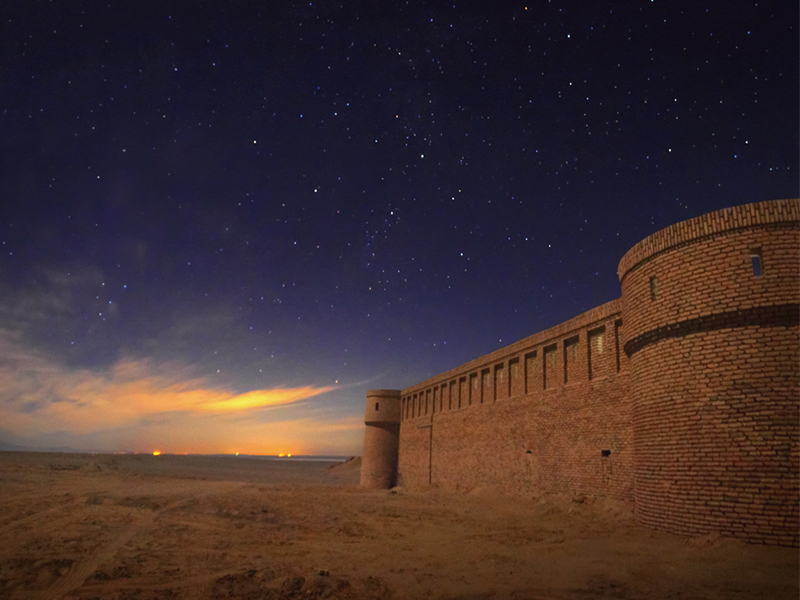The Maranjab Desert, also known as Dasht-e Maranjab, is a captivating desert located in central Iran. It is renowned for its stunning landscapes, unique sand dunes, and mesmerizing salt lake. As one of the most popular and accessible deserts in the country, the Maranjab Desert attracts numerous travelers seeking adventure, tranquility, and a glimpse into the beauty of the desert ecosystem. Traveling to the Maranjab Desert is a highly recommended experience. Watching the starry sky and immersing yourself in the silence of the desert nights can be truly captivating. In this article, Eligasht Agency aims to take you into the heart of the Maranjab Desert and familiarize you with this dreamy destination.
Book Iran Air flights from London to Tehran and Tehran to London with Eligasht UK:
Is it safe to travel to the Maranjab Desert?
The Maranjab Desert is located in the province of Isfahan, specifically in the northern part of Aran and Bidgol County. It is approximately 53 kilometers away from the city of Kashan. This area was once part of the Silk Road during the Safavid era and was a popular destination for Shah Abbas I. Historical records indicate that the name “Maranjab” was chosen by the beloved Safavid king himself. Interestingly, the original name of this area was “Mard-e Ranj Ab” (the man in distress for water), reflecting the difficulty of obtaining fresh water in this region. Over time, the name of this desert changed to Maranjab. It is recommended to travel to the Maranjab Desert in groups because there are several factors to consider in order to avoid difficulties and troubles in the vast desert. This article will prepare you for a safe journey in the Maranjab Desert.
When is the best time to visit the Maranjab Desert?
The best time to visit warm and dry regions like the Maranjab Desert is during the autumn season. The weather in the Maranjab Desert during autumn usually ranges between 10 to 22 degrees Celsius with cool nights. If you plan to stay for a few days in the desert and enjoy the enchanting and unique nights, we recommend choosing the autumn season. Mid-autumn to late Aban month (October to November) is the most suitable time for hiking in the Maranjab Desert.
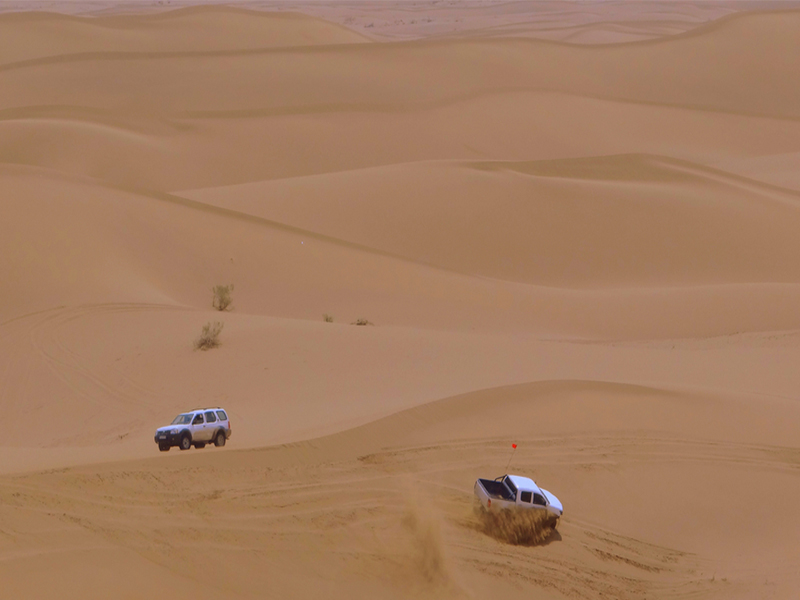
Sights to see in the Maranjab Desert
If you plan to stay in the heart of the desert, it is advisable to familiarize yourself with the attractions in and around the Maranjab Desert. It would be a shame to travel such a distance and miss out on the beauty of the surrounding attractions. In this section, we will introduce the most famous and noteworthy sights to see during your trip to the Maranjab Desert.
Masileh Salt Lake (Daryacheh-ye Namak Masileh)
Located near Lake Urmia, which is the largest lake in Iran and has now turned into a salt lake, Masileh Salt Lake is also one of the largest salt lakes in Iran. It is situated in the central desert and the northern part of the Maranjab Desert. Masileh Salt Lake is the most famous tourist attraction and most desert tours take visitors there to enjoy the beautiful view of the lake during sunset. Although the lake is about 35 kilometers away from Aran and Bidgol village, it is also known as Aran and Bidgol Salt Lake. Masileh Salt Lake is located in the Band Rig Desert, which is closer to the borders of Isfahan, Semnan, and Qom provinces. Please note that Masileh Salt Lake is located in the Band Rig Desert.
Related post
The Most Mysterious Caves in Iran
Abuzeidabad Desert | A Captivating Oasis in the Heart of Kashan
The Sargardan Island of Isfahan
Within the salty lake known as Aran and Bidgol, there is a large island called the Sargardan Island of Isfahan, which is considered one of the most fascinating attractions in Maranjab. This island is situated in the heart of Lake Namak. In the past, it was believed that the Sargardan Island was floating and moving. However, nowadays we know that this belief is incorrect and it was an optical illusion that made it appear as if the island was moving. If you intend to visit this part of the desert, it is better to travel with a group and a guide.
Maranjab Caravanserai
Maranjab Caravanserai is one of the remnants of the Safavid era and is now considered one of the oldest and most remarkable tourist destinations for traveling to the desert. In the year 1012 AH (1603 AD), during the reign of Shah Abbas Safavid, the Maranjab Desert was one of the busiest routes, especially for traveling from Isfahan to the city of Mashhad. During that time, caravanserais were being constructed throughout the country, and upon his orders, Maranjab Caravanserai was built in this area. This caravanserai is one of the finest and largest caravanserais of the Safavid era and was among the busiest caravanserais in Iran until the Pahlavi era when road construction and urban development began throughout the country.
Roads were constructed to provide access from Isfahan to Mashhad, and thanks to these roads, no one passed through the Maranjab Desert anymore, leading to the decline of the Maranjab Caravanserai. Before the victory of the Islamic Revolution, the University of Tehran and the Cultural Heritage Organization of Kashan undertook the restoration and reconstruction of Maranjab Caravanserai to establish a research station. However, due to some revolutionary events, this project was canceled. In 1378 AH (1999 AD), the Cultural Heritage Organization acquired this caravanserai and it is currently undergoing restoration and reconstruction. In 1384 AH (2005 AD), Maranjab Caravanserai, with its 29 cozy rooms and traditional environment, was listed as a national heritage site of Iran.
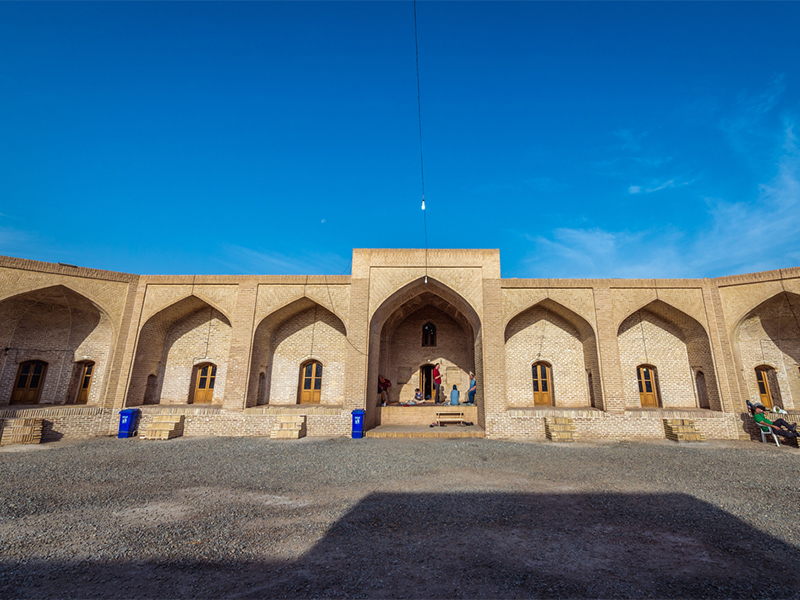
Today, Maranjab Caravanserai is regarded as one of the historical and valuable attractions of the region and is also considered the most popular eco-lodge in the Maranjab Desert. At the beginning of the desert tourism season, all rooms in this eco-lodge are booked. It is good to know that all the rooms in this caravanserai are sleeping on the floor, so you should bring your sleeping bag.
Dastkand Well
Dastkand Well holds great value and respect for many people. It is located near the Maranjab Desert, and unlike the salty rivers and salt lakes of the area, freshwater springs from this well. This water passes through sand filters and ultimately delivers slightly salty, sweet water.
Korshahi Castle
Another structure in the Maranjab Desert, built during the Sassanian era, is Korshahi Castle. Today, this castle is abandoned, but it still retains the beauty of its era. During the Sassanian rule, Korshahi Castle had special significance and is still known as the “Brick Jewel of Iran.” The purpose of constructing Korshahi Castle was to protect against Mongol invasions.
The Kashan Castle has an area of over 8,000 square meters and was built during the Sassanian era. It was one of the large castles constructed during that time. Each wall of this castle is approximately 210 meters long and it has 10 main towers and 5 subsidiary towers. Additionally, there was a water reservoir castle surrounding it to defend this magnificent structure during the Mongol attacks. If you intend to visit Kashan Castle, you should head south towards the desert and near the village of Abouzeidabad.
What are the activities in the Maranjab Desert?
The activities that can be done during a trip to the Maranjab Desert and most desert areas include walking on dunes, off-roading and dune bashing, stargazing, camel riding, motocross, sandboarding, and camping. In the villages of Aran and Bidgol, off-roading camps are allowed, and four-wheelers and off-road tours are provided in the desert. If you plan to go hiking in the Maranjab Desert, make sure to have a desert map, a map of animal habitats, and a compass with you, as mobile phone reception and GPS may not work in some desert areas. Also, try to walk between 10 am and 4 pm to avoid the exhausting heat of the region.
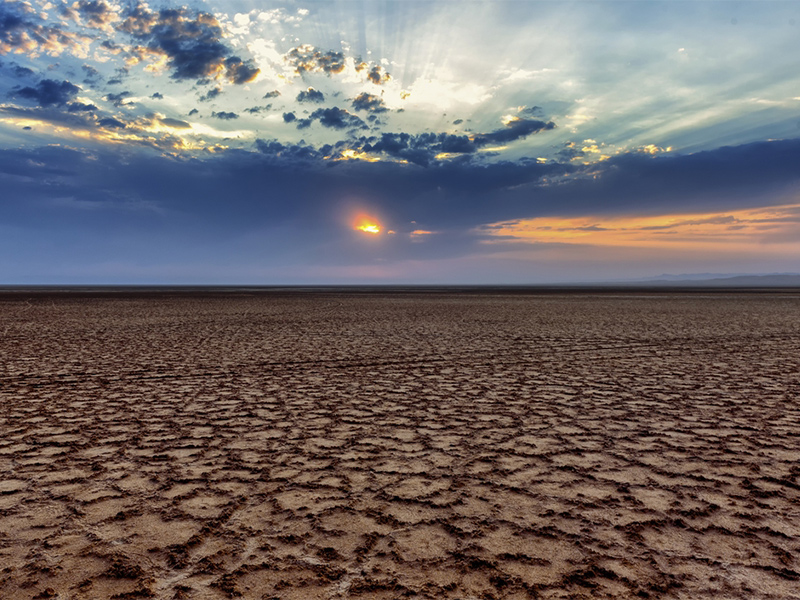
Address of Maranjab Desert on Google Maps
If you take a quick look at the map of Iran, you will see that the Maranjab Desert is very close to the Aran and Bidgol County. However, you can choose cities like Isfahan, Qom, Kashan, or even Semnan and Tehran as your destination to start your desert tour.
Traveling to the Maranjab Desert by private car
Many people choose to travel to the Maranjab Desert in groups with their private cars. If you also prefer to travel by private car, pay attention to the following points:
- It’s better to head towards the desert from Aran and Bidgol County.
- Non-off-road vehicles will experience high wear and tear in the desert, and the risk of getting stuck on the road between them is common. Therefore, it’s better to travel with at least two cars and have recovery equipment with you.
- If you are traveling without a local guide, do not deviate from the main routes.
- For several days, at least one day more than your travel days, bring enough water and food with you.
- Mobile phone signal is available within a 30-kilometer range of Maranjab Caravanserai, so if you encounter a problem, you may need to use alternative methods such as lighting a tire on fire to seek help.
- The Maranjab Desert is a natural treasure of our country. It is the responsibility of every desert traveler to take care of this treasure, so remember to carry a trash bag to keep our desert clean.
Safety Tips for Desert Travel
Traveling to the Maranjab Desert, like any other desert destination, has its risks, but by following a few simple safety tips, you can prevent these risks. Read and remember the following desert travel safety tips:
- Various animals inhabit the desert, and the risk of encounters is high. Be cautious of wildlife.
- Desert sands are home to different types of scorpions and snakes. Take care to avoid them.
- To prevent snake and scorpion bites, it’s better to wear high-top shoes.
- The likelihood of getting lost in the desert is very high, so always travel with a guide and a map.
- Dehydration and low blood sugar levels can lead to shock. Carry an ample supply of water and sugary snacks.
- Never venture into the desert alone with a single vehicle. The risk of car breakdowns and getting stuck is high. Always travel in groups.
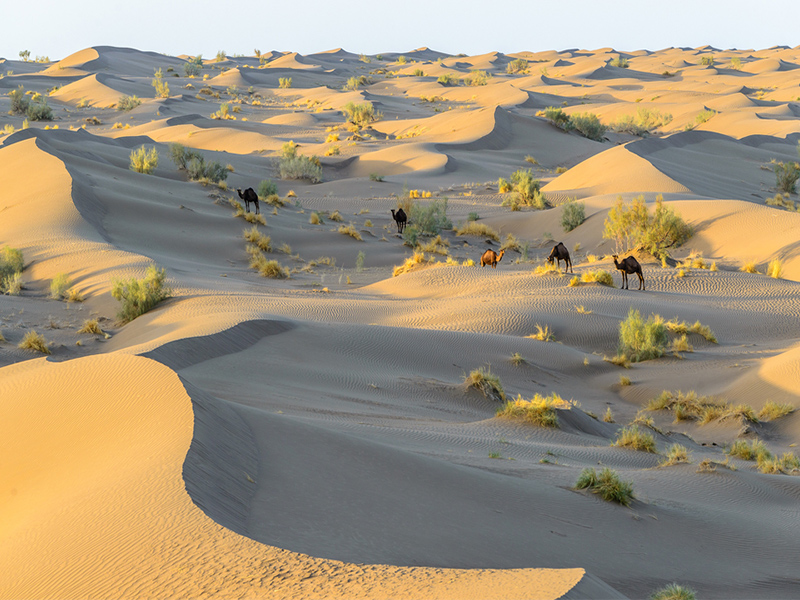
Final words
the Maranjab Desert presents a captivating blend of golden sand dunes, rugged terrains, and sparse vegetation. The ever-shifting patterns of the dunes create a surreal and ethereal atmosphere, making it a photographer’s paradise and a dream destination for nature enthusiasts. Perhaps, upon seeing pictures of the desert and its surrounding tourist attractions, you have become eager to travel to the Maranjab Desert. As the nearest desert to Tehran, the Maranjab Desert is one of the most well-known and popular deserts in Iran. However, traveling to the desert is not for everyone. Besides getting to know the desert well, it is recommended to use desert tour services to have a peaceful and safe journey. this desert destination promises a journey filled with awe-inspiring moments and lasting memories.
Frequently Asked Questions:
1- What are the tourist attractions in the Maranjab Desert?
Caravanserai Maranjab, Mesileh Desert, and Sargardan Lake are among the most famous tourist attractions in this region.
2- How many hours is the distance from the Maranjab Desert to Tehran?
It takes about 3 hours to travel from Tehran to Aran and Bidgol.
3- Are there accommodations in the Maranjab Desert?
Yes, there are several reputable accommodations in the Maranjab Desert.
